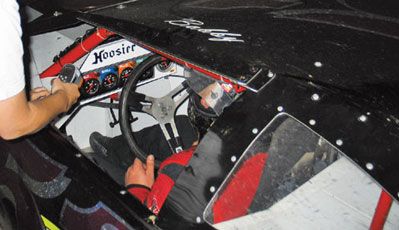
If the engine in your race car gets too hot, it shuts down. Your body is no different. If you get too hot, you're going to shut down; that's something you don't want, especially if you're taking the white flag en route to your first feature win.
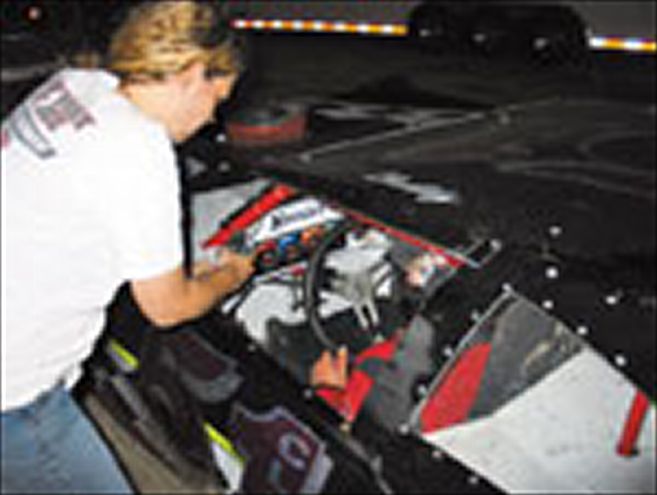 The air temperature was only 75 degrees, but the inside of Bobby Clark's car was over 150. Think he wasn't hot?Think again.
The air temperature was only 75 degrees, but the inside of Bobby Clark's car was over 150. Think he wasn't hot?Think again.
"In closed-car environments, the risk of heat stroke and heat exhaustion is real," says Kyle Keitzman of Bell Racing. But just what exactly is heat stroke, and why should a racer care about it?
Heat stroke and its two less severe cousins, heat exhaustion and heat cramps, are caused when the body cannot lose or dissipate heat. They are serious medical conditions and can even be fatal if not properly and promptly treated. Symptoms of heat stroke can sometimes mimic those of heart attack, and in certain cases, a person experiences symptoms of heat exhaustion before progressing to heat stroke. The symptoms of heat exhaustion may include fatigue, weakness, dizziness, headaches, muscle cramps, nausea, and vomiting-none of which you want to experience while in a race car.
To understand how to combat heat-related problems, we have to understand how our bodies work. During normal activity, the human body generates up to 50 degrees of added/excess heat in 24 hours. That is heat that your body must get rid of if it is going to maintain its internal core temperature of 98.6 degrees. When you strap into your race car on a hot summer night, your body is going to generate excess heat that it must dissipate.
There are four ways that it can accomplish this, and radiation is the most effective. Your body will radiate heat when the air temperature is lower than your body temperature. Next is evaporation, which is the release of perspiration through the sweat glands on the skin's surface-still very effective at keeping us cool. Convection is heat loss to air/water vapor, which must be lower than your skin temperature. Finally, there is the least effective way to cool your body: conduction, or the transfer of heat from warmer to cooler objects by direct contact. Ironic when you think about that, isn't it? What's the first thing we do when our bodies are overheated? Douse ourselves with water and a cold cloth. Yet that is the least effective way to get cool.
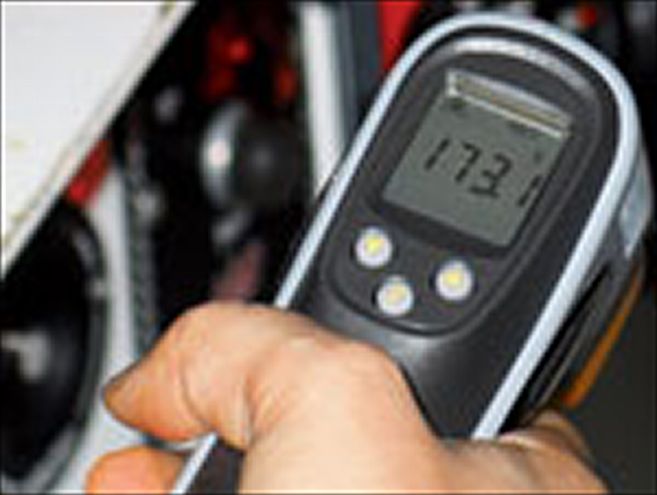
Now, when the temperature around you is over 95 degrees, radiation, convection, and conduction stop working, leaving only evaporation as the way to cool your body. "Big deal," you say, "we all sweat in the race car." Consider this: NASA did a performance study on how external temperatures affect the number of mistakes a person makes when performing a specific task. They found out that over the course of one hour, the average person made five mistakes when the temperature was 80 degrees. At 90 degrees, they made only nine mistakes during a 60-minute span. But when the temperature reached 95 degrees, the number of mistakes spiked to 60 in one hour. That's one goof every minute. Why? Because evaporation cannot handle the task of cooling the body all by itself. This is especially significant in a race car because firesuits do not let your body maximize evaporation.
Keep A Cool Head
"You can increase your performance by staying cool," says Jill Swanson, owner of Fresh Air Systems Technology (F.A.S.T.), the Illinois manufacturer of driver cooling products. "Keeping your body in better shape translates to keeping your mind in better shape. That means you can race longer, race harder, and think clearer."
Ultimately, making better decisions on the track can yield that prized trophy at the end of the race. But don't worry; you don't have to drop $3,000 on some fancy Nextel Cup cooling system to keep yourself in race-winning form.
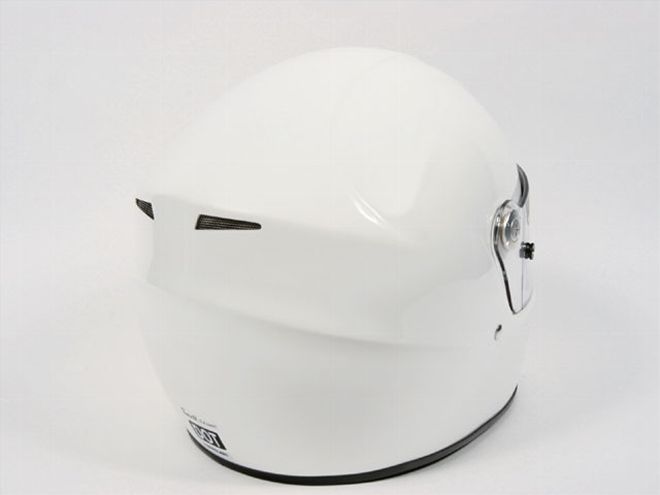 This $229 SA-rated helmet from RaceQuip has both front and rear ventilation to aid in airflow.
This $229 SA-rated helmet from RaceQuip has both front and rear ventilation to aid in airflow.
In order to maintain optimum performance, you need to keep your body's core temperature at about 98.6 degrees F. Swanson says one of your goals should be to cool your chest area. While you can wear special shirts under your uniform to accomplish this, the first order of business is to make sure your lungs are getting cool, clean air. This fresh air is the beginning of keeping your core cool. But getting that fresh air to our lungs is a little complicated. Unlike Derek Jeter, Shaquille O'Neal, or other athletes, we race car drivers have a little something we call a helmet in our way.
Those of us who were Boy Scouts learned that one of the primary areas where heat escapes your body is through your head. As racers, we cram our noggins into foam-insulated, composite-wrapped chambers each time we strap into the car, and they can get hot. Helmet manufacturers have gone to great lengths to solve that problem by designing systems that maximize airflow.
"Our goal [in helmet design] is to return the body to a more natural form of cooling," says Bell's Keitzman. That means maximizing the airflow. When you sweat, moisture builds up. If that moisture can't evaporate, first comes heat cramps, then heat exhaustion, and finally, heat stroke. Keeping your body cool is all about helping that moisture evaporate through good airflow. Since air has a hard time flowing through a firesuit, the helmet becomes exceptionally critical in speeding evaporation.
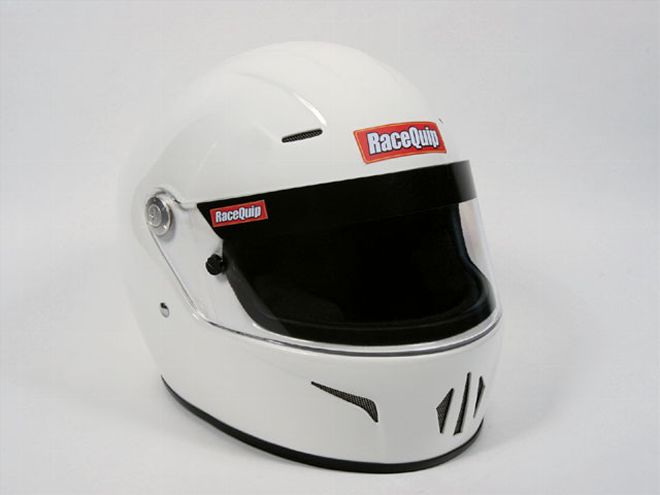
Most racing helmets from reputable manufacturers usually have some type of ventilation system built in. These vents are actually channels that funnel in air from the front of the helmet up onto your face. Some helmet designs have outlets on the back that allow the air coming in from the front somewhere to escape.
Vented helmets rely on the air coming into the cockpit to keep you cool. A step up from the traditional vented helmet is a forced-air-style helmet. These helmets are designed to circulate fresh air from outside the car directly into the helmet.
There are essentially two different styles of vented helmets. One has a side-entry pipe, where the fresh air is vented across your chin and up around your face, and the other features a pipe on the top that funnels into channels or a bladder that dissipates the air around your head.
Side-entry-pipe helmets came first, but the top-entry ones are gaining popularity. Locating the pipe on the top of the helmet instead of the side allows for increased driver head movement because the pipe does not interfere with the protective head surround of the latest safety seats.
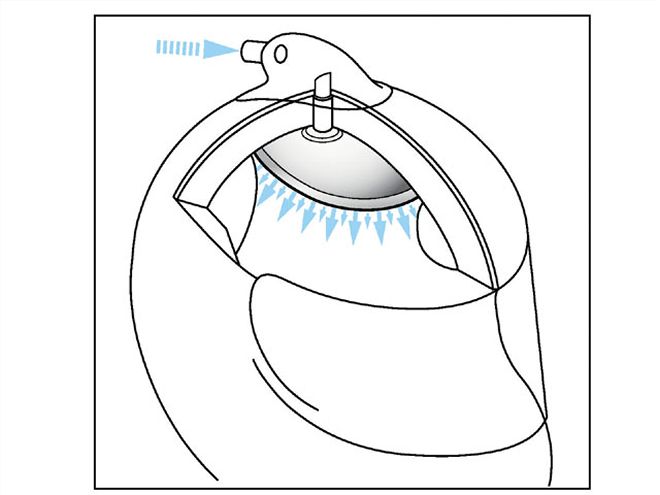 This diagram from Bell Racing shows how forced-air helmets direct airflow around your head.
This diagram from Bell Racing shows how forced-air helmets direct airflow around your head.
These forced-air helmets work by increasing pressure inside the helmet, which accelerates airflow into the area in the front of the helmet, thereby maximizing ventilation and cooling. "These designs evaporate the moisture that builds up around the head," says Keitzman. That is, of course, the key to keeping a cool head during a hot race. "If you do not have proper air circulation, your body temperature will go up," says Swanson.
In both helmet designs, one end of the hose is attached to the pipe while the other is attached to some type of filtration and/or cooling system mounted elsewhere in the car.
Air Cooled Drivers
There are a number of manufacturers making cooling systems for the racer. The biggest factor to consider is the type of racing that you do. A series of three to four 25-lap contests will have a different effect on your body than a 150-lap ARCA race. F.A.S.T. makes a unit called the FA-129 Racer Series helmet blower. It's perfect if you're racing in an area of the country that is fairly temperate, such as Elko Speedway in Minnesota. This is a 105-cfm blower that has a filter mounted to the inlet. The small motor sucks fresh air through the filter and blows the clean air into the hose that is affixed to your helmet. The result is a constant flow of clean, fresh air.
Of course, you have to have a forced-air helmet to accommodate the blower system. However, it is not a problem if you don't. F.A.S.T. will convert your helmet for as little as $200. Add the blower system and you'll have cool, filtered air for $350.
Now if you race at, say, Ark-La-Tex Speedway in Louisiana, where the temperature gets a bit warmer in the summer months, you're going to want an upgrade over the FA-129. F.A.S.T.'s FA-130 boosts the blower rating to 150 cfm, delivering more fresh air to your lungs faster. Shafer Enterprises, which manufacturers the Cool Shirt, also makes blowers, offering 135- and 235-cfm blowers with HEPA-4 air filters.
Of course, it can get really hot in those dog days of summer. When it does, that air system may need an extra boost to keep your core at that all-important 98.6 degrees F. To get that extra boost, many manufacturers have added an inline cooling system between the blowers and the helmet. In a nutshell, the air being sucked in by the blower is passed through a cooler full of ice. Warm air goes in, cool air comes out.
Nice Duds
Born out of the needs of the medical industry, the Cool Shirt has been around since the late '80s. There are several types on the market, but they all have the same basic design. Chilled liquid is pumped through tubing that is sewn to an undershirt. The shirts can be straight cotton or Nomex/CarbonX blends.
 Note the side vent and filter on this Sprint Car driver's helmet.
Note the side vent and filter on this Sprint Car driver's helmet.
Rich Shafer, president of Shafer Enterprises, which manufactures the Cool Shirt Personal Cooling System, says that the only real way to reduce your body's core temperature is to cool your blood. "Drinking cold fluids will rehydrate you but it won't cool you down. To cool your core, you need to cool your blood."
With heavy perspiration, up to one half of your body's normal blood supply flows to your skin's surface to aid in evaporation. This leaves the other half of your blood supply to operate your brain, muscles, and vital organs, resulting in fatigue, weakness, aches, poor decision making-you get the point. The Cool Shirt and others like it cover 30-40 percent of the skin's surface with temperature-controlled cool water, ranging from 45 to 60 degrees F. "As the liquid pumps through the shirt, it cools the surface of the skin, which, in turn, cools the blood," says Shafer. "That cooled blood returns to the internal organs so vital in keeping your mind alert and your reaction times up."
While Cool Shirts have been around for almost two decades, racer acceptance is still the biggest challenge for both Swanson and Shafer, who says, "The hardest thing is to get them to try it. Once they try it, they're sold."
Cooling, The Next Generation
Several years ago, two Stanford University PhDs, Dr. Dennis Grahn and Dr. Craig Heller, developed a new way of cooling the body. Their patented CoreControl system works for your body basically the same way the radiator works for your engine, from the inside out. And get this-the only area it touches is the palm of your hand.
"It's a more direct path to cooling the blood," says Mark Smith, executive vice president and director of R&D for AvaCore. Smith explains that there are specialized blood vessels in the palms of your hands that are specifically for heat dissipation purposes. These vessels allow large amounts of blood to flow directly beneath the skin. By targeting that specific area, the CoreControl system can cool the internal body temperature very quickly.
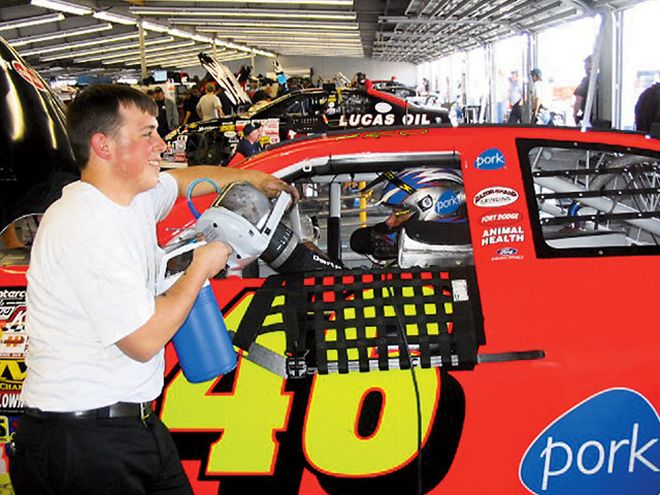 Defending ARCA Champion Frank Kimmel uses a CoreControl during practice at Daytona as the crew works on the car.
Defending ARCA Champion Frank Kimmel uses a CoreControl during practice at Daytona as the crew works on the car.
The portable handheld unit features a small cooler that holds ice water, with tubes running to a pistol-grip handle enclosed in a case. To use it, you flip the switch on, stick your hand through a hole in the case, and grab the grip. Crank down the wrist cuff to create a slight vacuum around your hand, sit back, and relax. The vacuum enhances blood flow while allowing the unit to operate at a colder temperature, which, in turn, cools the body's core quicker.
CoreControl is a versatile tool that can be used by just about everybody on the team: the pit crew during the race, the driver between heat races, and even spouses in the infield. AvaCore is currently working on prototypes for systems that could be used by drivers in an actual race.
Conclusion
Keeping body temperature down should be a top priority for all racers. Whether you choose to go all-out with a top-shelf cooling system or just go for a helmet with front and rear venting, do something to keep yourself cool. And remember, the most effective way to cool your body is to keep core temp down and fresh air coming into your lungs. By doing so, you will be able to think clearer and make better decisions. Your body will respond quicker during the race and feel better after it. Don't lose the race because your body gives out.